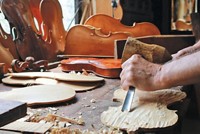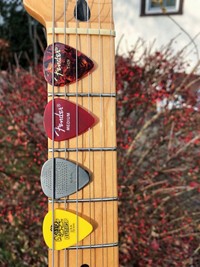Advertisement
Grab your lab coat. Let's get started
Welcome!
Welcome!
Create an account below to get 6 C&EN articles per month, receive newsletters and more - all free.
It seems this is your first time logging in online. Please enter the following information to continue.
As an ACS member you automatically get access to this site. All we need is few more details to create your reading experience.
Not you? Sign in with a different account.
Not you? Sign in with a different account.
ERROR 1
ERROR 1
ERROR 2
ERROR 2
ERROR 2
ERROR 2
ERROR 2
Password and Confirm password must match.
If you have an ACS member number, please enter it here so we can link this account to your membership. (optional)
ERROR 2
ACS values your privacy. By submitting your information, you are gaining access to C&EN and subscribing to our weekly newsletter. We use the information you provide to make your reading experience better, and we will never sell your data to third party members.
Materials
Stradivarius SchmadIvarius
May 4, 2009
| A version of this story appeared in
Volume 87, Issue 18
THE MYSTICISM surrounding instruments by Stradivari and Guarneri is, in my opinion, a way of propping up their prices at auction (C&EN, Feb. 2, page 29).
Sure, these are fine instruments; however, the only time we hear a Stradivarius is when a great musician is playing one. Of course the thing will sound great, but these fine musicians can make a cigar box with strings sound great as well. My 2006 cello puts many of the grand masters to shame, as evidenced by the fact that their owners won't discuss their instruments with me. To date, no one has approached me to run a CAT scan on my 21st-century instrument. Who knows what "differences" will be uncovered? Who cares?
Recently, I've seen a couple of articles describing the application of high-tech probes to grand-master violins. They find differences, but nobody proves causality. Maybe it's asking too much to prove whether the topography of the wood fibers or chemical treatments have anything to do with tonal quality. I maintain close ties with a luthier who informs me that, to this day, violin making remains an art. The name on the label in the box carries some weight, but the proof is still in the playing.
From playing many different cellos lately, ranging from the 18th century to the modern, I can report that the older instruments need a lot of work and care to produce the fine sounds they are capable of making. To bring out their tones, we use modern materials, mainly in the strings, which use materials not found in Stradivari's time, like synthetic nylon cores or tungsten and titanium wrapped by steel. I've tested a number of different strings on my cello and found major tonal differences. The bow also influences the tone, because the tension of the horsehair stretched between two end points allows it to vibrate sympathetically with the instrument—or not.
Bottom line: A Stradivarius or Guarneri is not the be-all and end-all of violins. Most of these instruments incorporate modern materials, either in their strings or in the repair materials, all of which influence their tonal quality, not to mention bow choice. A great instrument can be a few years or a few centuries old, and its quality can only be brought out by the musician. To my thinking, if Stradivarius made 18th-century writing desks, they should be worth millions just because they have his name on them, although nobody would believe you could write the "Great American Novel" on it.
Thomas Zebovitz
Rockville, Md.




Join the conversation
Contact the reporter
Submit a Letter to the Editor for publication
Engage with us on Twitter